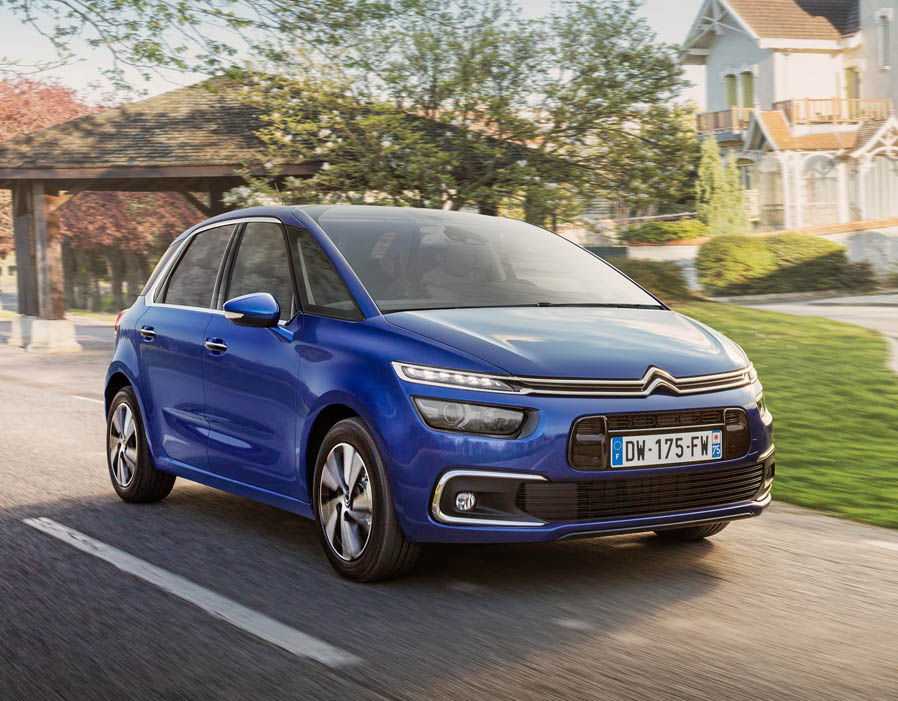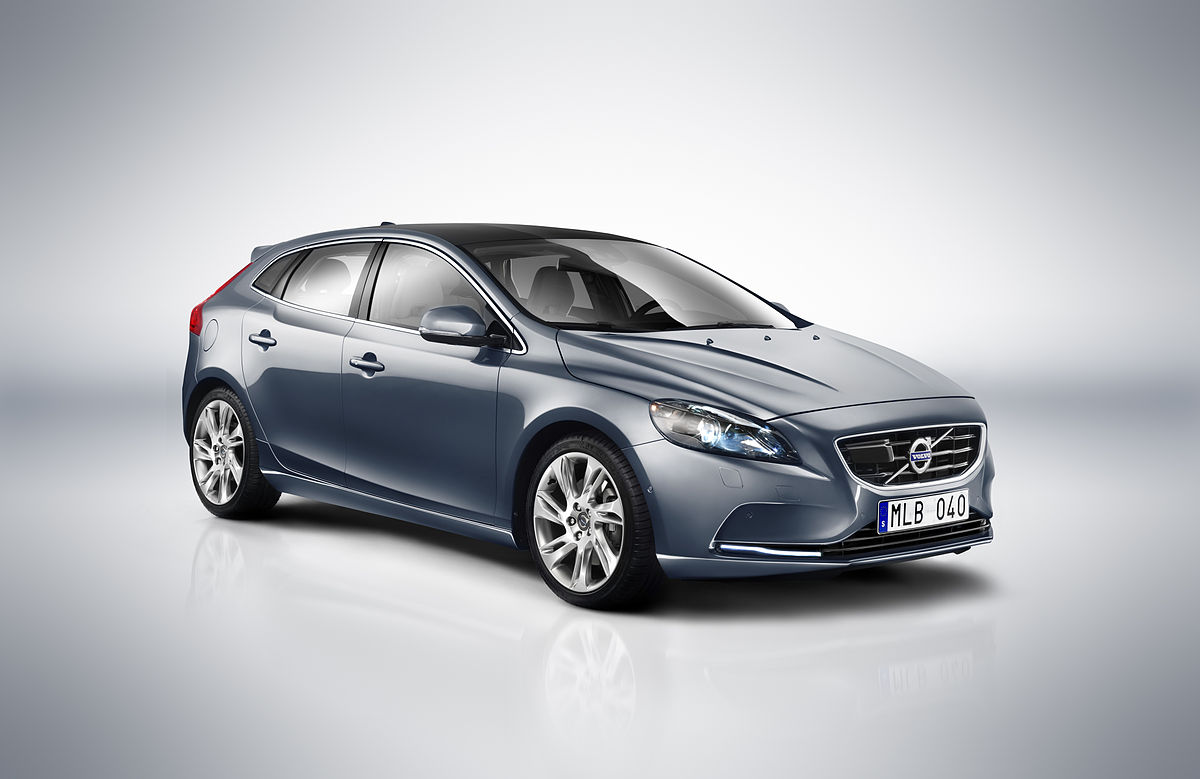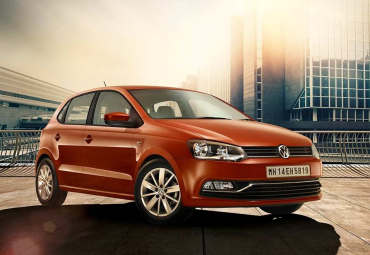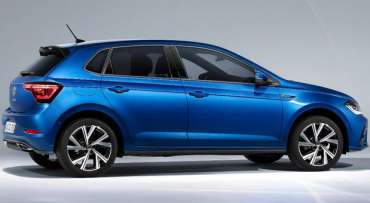Displaying items by tag: Volkswagen Polo
25 car models to avoid
As much as there has been a high degree of standardization in the automotive industry, there are still models that have "nothing wrong" for years, while others hang out with the masters every now and then.
We recommend for you
What Car? the publication helped us to see which 25 car models should be avoided, because they are already problematic within the first three years of ownership.
What Car? applied a proven formula in which over 14,000 car owners were surveyed regarding reliability over the past 12 months. A third of those surveyed confirmed that their pet "reported" at least one mistake.
To categorize defects and rank them in order of abundance, owners were asked to select an area within which the problem occurred. There were 14 such groups in total: battery, body, brakes, engine, electrical system (engine-related), exhaust system, exterior lights, fuel system, transmission/clutch, interior trim, electrical system (not related to engine), steering system , suspension and others.
Also, the editors created a questionnaire in which the owners reported how much time the car spent in the workshop to fix the problems and how much the repairs cost. That information was used to create a unique ranking system, which penalizes models that have had expensive and time-consuming repairs while rewarding those that have proven to be reliable.
The research covered 169 models from 33 different brands. Let's see who these "rascals" are:
25. Volkswagen Polo (2009-2017)
Result: 58.8%
Just over 20 percent of the owners of the previous generation Polo reported errors on their cars, and the most common was related to the electrical system (not related to the engine) - 15 percent, with even half of the problems related to the air conditioner. Other problems include the start-stop system, the rear camera and the screen of the infotainment system.
24. Mercedes-Benz GLA
Result 58.6%
GLA owners reported a fault with 42 percent of the cars. However, the majority (35 percent) were not so significant and did not prevent the car from being driven. All issues were resolved at no cost in less than a week.
23. Mazda3 (2009 - 2013)
Result: 58.4%
Overall, 28 percent of previous-generation Mazda3s had some kind of problem. Models powered by gasoline engines were more problematic than their diesel counterparts. The suspension, steering system and engine electrics were the areas where the problems were most serious in the petrol models. Not all cars were repaired under warranty, and more than half spent more than a day in the service station.
22. Volkswagen CC diesel (2012 – 2016)
Score: 58.0%
40 percent of CC owners reported some problem with their vehicles. Many of them were related to the electrical system, but not the one related to the engine. Some repairs were not covered under warranty, and some of the cars were out of service for more than a week.
21. Citroen C4 Picasso/Grand C4 Picasso
Result: 56.8%
Electrical problems have greatly affected the (dis)satisfaction of C4 Picasso and Grand C4 Picasso owners. Namely, 37 percent of the cars had certain problems. Of these, 22 percent were related to electricity unrelated to the engine, and the problem air conditioner stood out in that. A good proportion of the problems were suspension-related (15 per cent), with a smaller percentage of repairs costing more than £1,500.

20. Seat Ateca
Result: 56.2%
Like previous models, the Ateca also suffers from electrical system problems unrelated to the engine. As many as 43 percent of owners reported problems, and 29 percent related to the specified area. The rear camera and automatic opening of the rear doors also caused headaches for owners. However, most of the cars were in roadworthy condition and almost all were repaired at no additional cost.
19. Range Rover diesel
Result: 55.8%
Although more durable than the smaller models in the luxury British brand's range, as many as a third of Range owners have reported some problem with their pet. The faults were mainly related to the electrics, but most of the problems were related to the bodywork and interior trim. Most of the vehicles were in drivable condition, and there were no additional costs for repairs.
18. Volvo V40
Score: 55.5%
Although the proverbially reliable brand, Volvo also found itself on the "rogue" list. Almost half of the V40 had some problem. Most often, they were related to the engine and exhaust system. Most of the repairs did not bring additional costs to the owners, while the stay in the service center was generally longer than one day.

17. Nissan Juke petrol
Result: 55.2%
A third of the Jukes had some kind of problem, at least that's what the owners say. The faults were mainly in the engine and the electrics of the engine (15 percent of the problems were related to these areas). Most of the cars remained in drivable condition, and the vast majority were also repaired without hitting the owners' pockets.
16. Land Rover Discovery diesel (2004-2017)
Result: 54.2%
Although robust in appearance, the previous one
generation Discovery is anything but reliable. Half of the owners reported various problems, and like the Range Rover, the majority (22 percent) related to the bodywork. The electrics of the engine were problematic in 17 percent of the examples. Fortunately, most were drivable and repaired under warranty.
15. Mazda2
Result: 52.7%
Obviously, Mazdas and Nissans are not as reliable as other "Japanese". Although this Japanese brand often ranks well on the reliability charts, owners of the "two" reported a lot of problems related to the air conditioning, and more than 10 percent had problems with the fuel supply system.
14. Tesla Model S
Result: 52.4%
Here is another frequent "customer" on the lists of unreliable cars. Nearly 38 percent of Model S owners reported faults, which were mostly split equally between body quality, interior trim and electric motor. Owners have also reported brittle exterior door handles, as well as problems with headlights. Although all cars were repaired under warranty, some were being repaired for more than a week.
13. Range Rover Evoque
Score: 52.0%
Owners of this model concluded that 34 percent of Evoques have some problem. 8 percent refers to the electrical system unrelated to the engine, 7 percent to the transmission/clutch, and there were also problems with the quality of the body and interior trim. Most vehicles are repaired within the warranty period, at no additional cost to owners.
12. Nissan Note
Result: 48.6 percent
Almost 36 percent of the Note has some kind of error. The engine and electrical system of the engine are problematic on 10 percent of gasoline versions, and overall, almost 18 percent of all Note had problems with the electrical system, and more than 14 percent with the suspension.
11. Nissan Pulsar
Result: 48.3%
Are Nissan and Land Rover in a "dead race" when it comes to lack of quality? The Pulsar is affected by a high percentage of problems with the electrical system, and the Yogun air conditioner stands out the most. Most of the problematic examples spent more than a day in the workshop, but all repairs were carried out under warranty.
10. Mercedes-Benz B class
Result: 46.1%
Just over 35 percent of owners of this model reported errors. These include fairly serious areas such as the engine, engine electrical system and transmission/clutch. It is quite clear that this required a considerable amount of time spent in master workshops, which means that the repair took more than a week on average.
9. Mercedes-Benz E class
Result: 46.1%
The new E-Class doesn't cost a lot, so it's not a very pleasant feeling when the new "three-pointed star" doesn't show itself perfectly. The results are similar to the last generation, so it seems that they did not draw adequate conclusions in Stuttgart. In total, 24 percent of the cars were problematic. Interior trim, problems with the electrical system, both motor and general, were the most common causes of headaches. Although all examples were repaired under warranty, a certain percentage had to spend more than a week in the workshop.
8. Nissan Qashqai diesel
Result: 44.2%
Another Nissan... Almost half (49%) of Qashqai diesels suffer from some problem. The most frequently reported errors are related to the electrical system (24 percent), which includes navigation, infotainment system and air conditioning. An additional 19 percent of vehicles had problematic batteries. Most of the vehicles were drivable, and most were repaired at no additional cost to the owners.
7. Land Rover Discovery Sport diesel
Result: 43.8%
We just thought that Nissan would "dominate", but Land Rover "doesn't give in". More than 40 percent of Discovery Sports had reported faults, most of which related to the quality of the body and interior trim. Also, there were problems with electricity, both motorized and non-motorized. All vehicles were repaired at no cost to the owners, and most were out of service in less than a week.
6. Jeep Renegade
Result: 42.1%
Jeep is also another frequent "customer" on the lists of the most unreliable cars. The compact Renegade may look rugged, but the fact is that nearly 43 percent of the cars ended up with owner complaints, and those related to serious problems. The faults were mostly related to the engine, engine electrical system and brakes. Some of the cars spent more than a week being repaired.
5. Jaguar XE
Result: 36.7%
We kind of feel sorry for JLR. We have not seen this kind of "occupation" of the list of unreliable vehicles for a long time. Jaguar's full-size diesel engine is problematic in as many as 44 percent of cases. The problems are mostly related to the electrics, but as with the Land/Range Rover cousins, the problematic body was not bypassed either. Faults were also reported in the engine, fuel injection system, steering and suspension. However, what "pleases" is that all repairs were completed within a week.
4. Fiat 500X
Result: 32.3%
Given the "success" of the Renegade, it was expected that a "twin" model would appear on the list. Owners have reported more than a third of the problematic Fiat 500X. The problems are equally
divided into bodywork and electrics (both engine-related and general). Although all were repaired under warranty, most had to spend more than a day in the service station.
3. Nissan Qashqai gasoline
Result: 28.9%
We don't know if Nissan fans are "pulling their hair out", but this Japanese brand definitely has a quality problem. Gasoline Qashqai models have a fault in as many as 56 percent of cases. Accumulators, bodywork and electrics (motor and non-motor) are the main problem areas. However, not everything is so black, all were repaired at no additional cost to the owners, and most spent less than a week in the service.
2. Volvo XC90
Result: 22.6%
Do we hear that murmur in the audience? Shocking or not, the fact is that 53 percent of XC90 owners have reported various problems with their (expensive) pets. Many are related to the electrical system and software, and it is indicative that the repairs of these things were often not successfully carried out on the first visit to the service center. However, everything was done under warranty.
Range Rover Sport diesel
Score: 14.5%
JLR is definitely the "champion", and the "champion" model is the Range Rover Sport in the diesel version. As many as 60% of diesel Range Rover Sport had problems of some kind. They covered a wide range of areas, with the most serious faults being related to the gearbox, drivetrain, engine and suspension. Not all cars were repaired under warranty, and some took more than a week to be repaired.
Source: What Car?
Volkswagen Polo in Singapore costs $ 73,600 - why?
Singapore is the most expensive country to own a car
YouTuber Kuma Kuruma opens the topic using the Volkswagen Polo as an example, citing its open market value (OMV), or the price of the car before taxes and fees are applied.
According to B92, the value of the open market is 17,796 Singapore dollars. Then an excise tax of 20 percent of the value is added, in Paul's case 3,559 Singapore dollars. After that, there is the service tax (GST) which is 7 percent - 1494 Singapore dollars.
The worst fee is the registration fee (ARF), and for cars whose open market value is below 20,000 Singapore dollars, you pay an additional 100 percent of the open market value. This means that since Polov OMV is Singapore $ 17,796, its registration fee is that much more.
Add another 3,559 Singapore dollars in excise duty and 1,494 dollars in services tax, the total price of the new Paul in Singapore is 40,646 Singapore dollars, which is 30,226 US dollars, or 2,983,214.82 dinars.
However, once you've bought your new car, your troubles don't stop - you need one more thing before you can drive it: a Certificate of Rights (COE) that allows you to drive a newly acquired vehicle for up to 10 years. For one Polo, such a certificate would cost around 48,000 Singapore dollars, according to which the final cost of Polo would be 99,000 Singapore dollars, which is 73,620 dollars!












